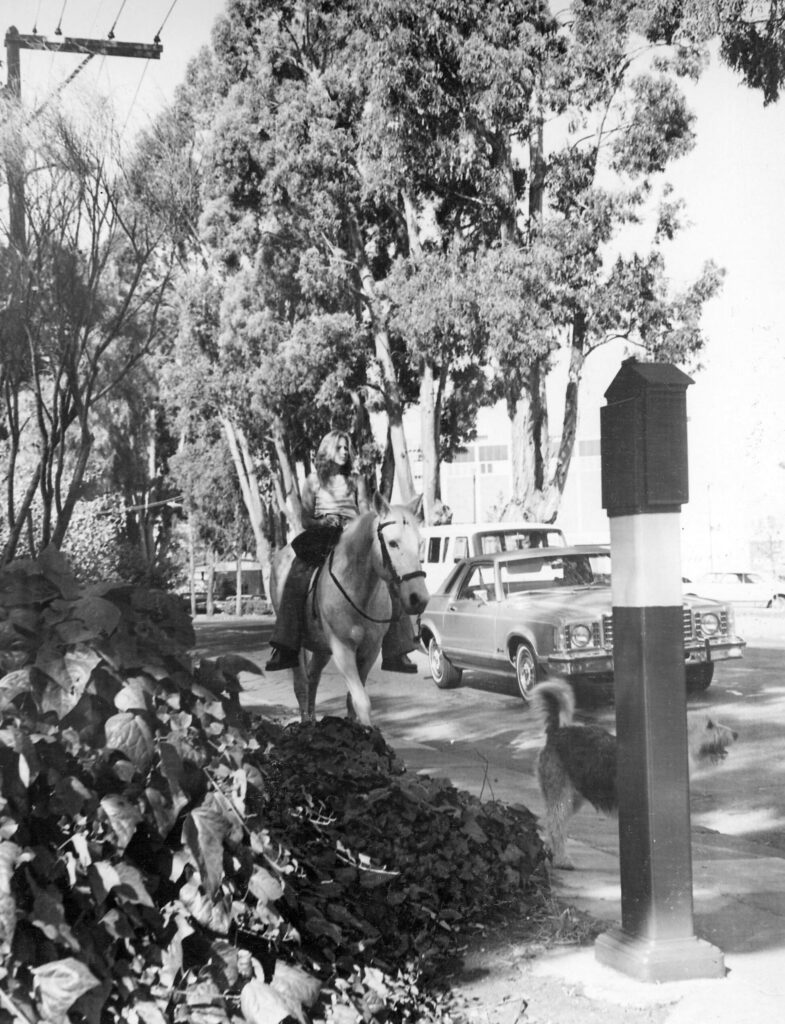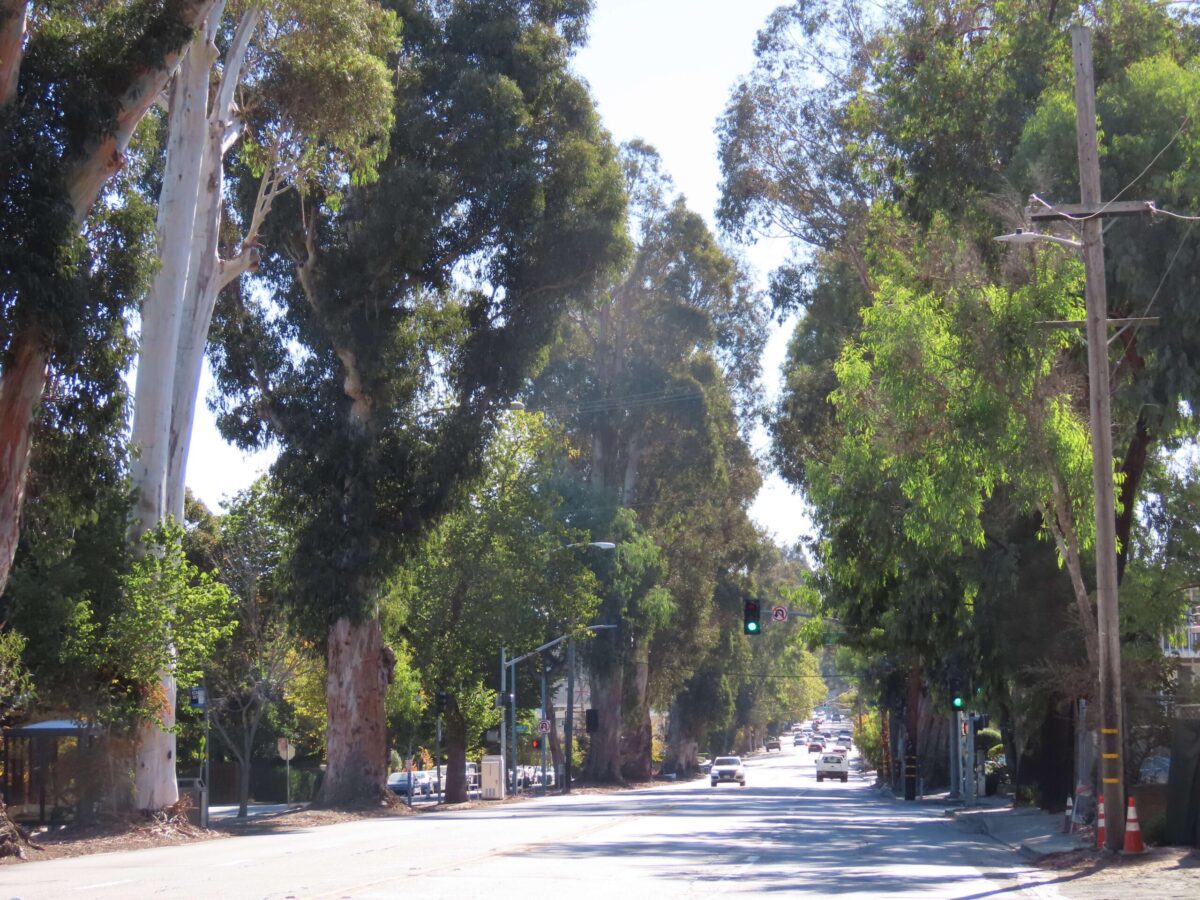Motorists on El Camino Real notice something different immediately upon entering Burlingame. The road narrows and the fast food restaurants and businesses that line much of the highway suddenly give way to a residential street lined by towering 150-year-old eucalyptus trees. For over a century, these majestic trees have welcomed visitors to the
mid-Peninsula town. In the 1920s, a local newspaper declared: “The State of California, famed throughout the world for the beauty of its vistas, has no more inspiring portion of highway than Burlingame’s grand boulevard. In all the long stretch of highway from San Francisco to San Jose, Burlingame’s prospect of graceful sentinel trees is the one real beauty spot.” Planted in the 1870s by famed landscape gardener John McLaren, the tunnel-forming canopy of well over 500 eucalyptus and elm trees was designed to enhance the value of local landowners’ estates by creating a beautiful, wind-protected boulevard out of what was then a largely barren, dusty dirt trail. The resulting park-like, landscaped environment predates the earliest California Highway tree planting program by nearly 50 years. Despite development pressure—especially during the 1920s when newfangled automobiles cruised the highway in growing numbers—Burlingame residents continuously rejected commercial land use along their stretch of El Camino Real. By 1930, Burlingame had become the first city in the nation to enact zoning to protect a historic resource—the highway trees. The 2.2-mile grove, aka The Howard Ralston Eucalyptus Tree Rows, was listed in the National Register of Historic Places in 2012. To learn more about Burlingame’s famous trees, visit burlingamehistory.org



